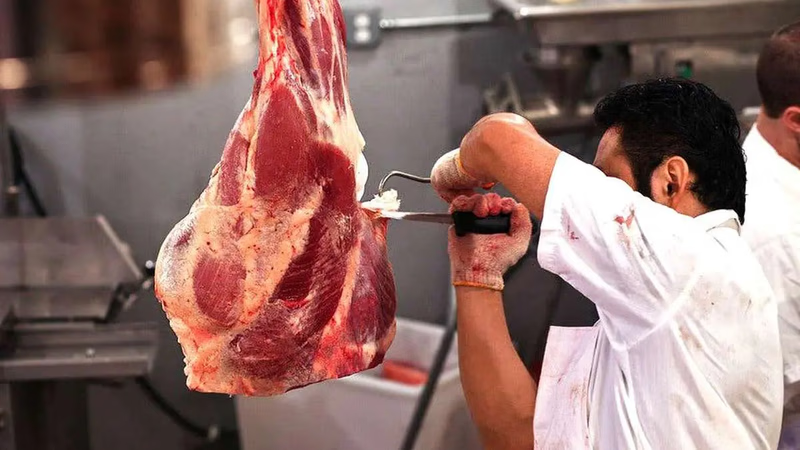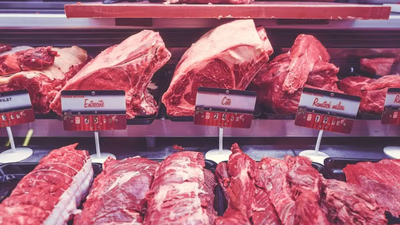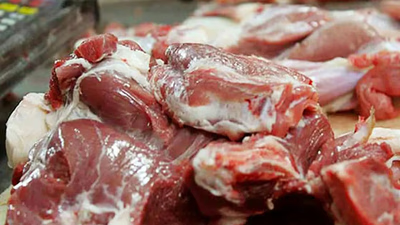
Diverse livestock farming practices enhance Middle East trade opportunities.
The Middle East is one of the main sources of animal husbandry history. This area has been one of the oldest sources of livestock breeding and meat production in the world. People's experience and expertise in this field is considered a strong point for meat production in this region. The Middle East has a lot of biological and climatic diversity. From desert and dry areas in the south to mountainous and high areas in the north, there are diverse conditions for raising livestock and producing meat. The Middle East has a large population and meat consumption is high in this region. This high domestic consumption creates a strong domestic market for meat production.
West Asian countries have a wide diversity in meat production. Some of the famous meats produced in this region are:
- Beef production is very common in West Asian countries, including Iran, Iraq, Turkey , and Saudi Arabia. Cows are bred to produce red meat, and beef consumption is very common in local and international cuisines.
- Goat farming is common in some West Asian countries, such as Iran, Iraq, Turkey, and Saudi Arabia. Goat meat is used as an important food source in this region and is used in various dishes such as ghee, marqa and other local dishes.
- Chicken breeding is also very common in West Asian countries, and the consumption of chicken meat is common in various daily dishes. Chickens are used as an important protein source in the production of meat and eggs.
- Sheep meat is also produced in some West Asian countries, such as Iraq, Turkey and Saudi Arabia, and is used in local dishes.
- In countries such as Saudi Arabia and Oman, the production of fish and marine products is also very popular. This region has long beaches and fish such as cold fish, salmon and shrimp are cultivated industrially in the waters of the Persian Gulf and the Arabian Sea.
Meat production and consumption in each country may vary depending on weather conditions, population reduction and other cultural and economic factors. In West Asian countries where the majority of the population is Muslim, pork production is usually prohibited for religious and cultural reasons. Therefore, pork production in these countries is very limited or rare. However, some West Asian countries with a larger non-Muslim population and whose official religion is not Islam may produce pork. for example:
- Armenia is a non-Muslim country and there is pork production there.
- Georgia is also a non-Muslim country, and in some of its regions, such as the Ajaria region, the production and consumption of pork is common.
- Israel is a country with a diverse population, where the consumption of pork is allowed for the non-Muslim population. As a result, there is also pork production in Israel .
The Middle East is facing the problem of lack of water resources. Meat production requires a lot of water resources, and the lack of water in this region can create limitations in meat production. In some countries of the Middle East, meat production depends on imports due to high demand. This dependence can create problems in situations such as sanctions or international price changes. In many countries of the Middle East, for religious and cultural reasons, the consumption of pork is prohibited. This restriction can create restrictions in pork production and market.
-

Meat pricing is a critical aspect of international trade, influenced by supply and demand dynamics, production costs, and trade agreements. Countries with rich natural resources often emerge as prominent meat exporters, while others rely on imports to meet domestic demand. The balance between supply and demand significantly affects meat prices; high demand with low supply typically drives prices up, whereas excess supply can lead to price reductions. Production costs, including animal feed and labor, also play a vital role in determining meat prices. Legal restrictions and infrastructural challenges can further impact pricing by increasing costs. Competitive markets may see lower prices as producers strive to attract consumers. Additionally, global market changes such as exchange rate fluctuations and economic policies can influence import and export prices. The quality of meat is another determinant; higher quality meats command premium prices due to their specific characteristics.
Regulatory standards for health and safety are crucial in maintaining the integrity of international meat trade. Overall, the interplay of these factors shapes the landscape of meat pricing in world markets.
-

The meat market in West Asia is significantly influenced by domestic demand, population growth, and lifestyle changes. Trade policies, including tariffs and agreements, play a crucial role in shaping the import and export landscape. Key factors affecting meat production include natural resources, infrastructure, technology, and health standards. Competition within domestic and international markets enhances quality while reducing prices. Major players in the Asian meat market include China, India, Japan, South Korea, Vietnam, and Indonesia. Each country exhibits unique consumption patterns influenced by cultural preferences and economic conditions. For instance, while China leads in overall demand for various meats, India has restrictions on beef due to religious beliefs. Japan prioritizes high health standards for its meat products.
The rapid economic growth across these nations indicates a robust potential for the meat supply chain. However, challenges such as political instability and infrastructure issues can impede trade development. Innovations in production and processing technologies are essential for enhancing market competitiveness.
-

Meat consumption in the Middle East and West Asia is influenced by cultural, religious, and economic factors. Red meat, particularly from sheep, cows, and goats, is a staple in many traditional dishes such as kebabs and Qorme Sabzi. Chicken is also widely consumed, with various preparations like tandoori chicken being popular. The Islamic dietary laws prohibit pork consumption, which is rooted in both religious beliefs and historical practices. Halal slaughtering methods are essential for meat to be deemed acceptable for Muslim consumers. Fish and seafood are prevalent along the Persian Gulf and Gulf of Oman coasts. The growing trend towards vegetarianism may alter future meat consumption patterns. Trust in imported meats varies among consumers; many prefer locally sourced products due to concerns about halal compliance and quality standards. This highlights the importance of transparency regarding the origin and preparation methods of imported meats.
-

The Middle East, with its rich history in animal husbandry, is a significant player in global meat production. The region"s diverse climates support various livestock farming practices, leading to high domestic meat consumption. Key meats produced include beef, goat, chicken, and sheep, with countries like Iran, Iraq, Turkey, and Saudi Arabia being prominent producers. Goat meat is particularly valued in local cuisines, while chicken serves as a vital protein source. Additionally, fish farming thrives along the Persian Gulf and Arabian Sea coasts. However, the region faces challenges such as water scarcity impacting production capabilities and reliance on imports to meet demand. Cultural factors also influence meat production; for instance, pork is largely prohibited in Muslim-majority countries but is produced in non-Muslim regions like Armenia and Georgia. Understanding these dynamics is crucial for stakeholders in the B2B marketplace and supply chain solutions across Asia. "




